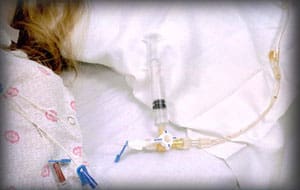Glucose is also used to provide carbohydrate calories to a person who cannot eat because of illness, trauma, or other medical condition. Glucose is sometimes given to people who are sick from drinking too much alcohol. Glucose may also be used to treat hyperkalemia (high levels of potassium in your blood). Glucose comes from the Greek word for 'sweet.' It's a type of sugar you get from foods you eat, and your body uses it for energy. As it travels through your bloodstream to your cells, it's called. Many people check blood glucose first thing in the morning before they eat (called “fasting”) as well as before other meals. You also may want to check 2 hours after the start of a meal (called “post-prandial”) when your blood glucose is likely to be higher. Other times to check include.

When it comes to buying test strips—including glucose test strips designed for your meter—the FDA recommends that you buy new, unopened vials. The FDA recommends that you do not buy or sell previously owned glucose test strips, which can give incorrect results and may not be safe to use with your device. Talk to your health care provider if you are not sure where to buy test strips for your glucose meter or if you cannot afford to buy the test strips recommended for use with your meter.

Using a glucose meter to check and monitor blood sugar is a daily part of life for millions of Americans with diabetes.
Glucose meters and test strips are medical devices regulated by the U.S. Food and Drug Administration. And the FDA wants to make sure you use these devices safely. Read on for advice.
Beware of Buying Previously Owned Test Strips
Test strips are part of many tests for home use that allow people to test for or monitor some diseases or health conditions, including diabetes. The FDA is aware that some sellers are marketing pre-owned or secondhand test strips to consumers. These are unused test strips previously owned by someone else.
These pre-owned strips may be sold at lower prices when compared to new strips. For instance, you may see flyers advertising cheap test strips in your neighborhood, or you may see sellers marketing cheap test strips online. But pre-owned strips can give incorrect results and may not be safe for use with devices.
In April 2019, the FDA issued a Safety Communication on this topic—“The FDA Warns Against Use of Previously Owned Test Strips or Test Strips Not Authorized for Sale in the United States”—for consumers, caregivers, and health care providers.
Here’s more information to consider.

- Test strips should be properly stored to give accurate results. If you buy pre-owned strips, it is hard to know whether the strips were stored properly. Test strips also could be expired. A lack of proper storage or using expired strips could put you at risk for getting incorrect results from your glucose meter. And incorrect results can put you at risk for serious health complications — and even death.
- Test strip vials that have been opened by another person may have small amounts of blood on them, which can put you at risk for infection.
- Pre-owned test strip vials may have been tampered with, which means that they may not be safe to use. For instance, the expiration dates might have been changed or covered up.
- Pre-owned strips also may not have been cleared by the FDA for sale in the United States. If instructions aren’t in English or the strips look different than other strips of the same brand, this can be a sign of unsafe strips.
The bottom line? When it comes to buying test strips—including glucose test strips designed for your meter—the FDA recommends that you buy new, unopened vials and that you do not buy pre-owned test strips.
Talk to your health care provider if you are not sure where to buy test strips for your glucose meter or if you cannot afford to buy the test strips recommended for use with your meter.
To learn more about test strip safety in general, see the FDA’s April 2019 Safety Communication.
7 More Safety Considerations for Glucose Meters and Test Strips
You may be a pro at testing your blood sugar levels. But consider these safety reminders.
Follow instructions carefully. Glucose meters and test strips are sold with instructions for use. You can call the manufacturer of your device or your health care provider if you have questions.
Ask your health care provider to watch you test yourself. He or she can tell you if you are using your device correctly.
Do quality control checks of your device. Regularly test your meter using a control solution to make sure the test strips and meter are working properly together. Read the meter’s instructions for use to see how often you should test it.
Understand what the meter display means. Be sure you know how high and low glucose values are displayed on your meter. Sometimes they are displayed as “LO” or “HI” when the glucose level is beyond the range than the meter can measure. Talk to your health care provider if you have questions.
Know which test site gives the most accurate results. Readings from other areas of your body may not be as correct as fingertip readings.
Of Glucose
- Readings from alternate sites—such as your forearm or palm—can be less accurate than fingertip readings when your glucose levels change quickly, for example, after you eat or during exercise.
- Take a reading from a fingertip if you think your blood glucose is low, if you don't normally have symptoms when your blood glucose is low, or if results from an alternate test site don’t match how you feel.

Know when and how to clean and disinfect your glucose meter. Cleaning and disinfection instructions can vary, so always read and follow the directions in your manual.
Know when to report device problems. In an emergency, call 9-1-1. For non-emergencies, the FDA encourages you to report any issues to MedWatch, the FDA’s voluntary reporting program. (Problems may include devices that don’t work, suspected incorrect results, or any other problem with your meter or test strips.)
Regulated Product(s)
Glucose meters test and record how much sugar (called glucose) is in your blood. They help you track your blood sugar level at different times of the day and night.
Meters can help you know how well your diabetes medicines are working. They can also help teach you how the food you eat and exercise can change your blood sugar level.
Three things you will need with your meter:
- Lancet - A small needle used to get a drop of blood from your finger or other part of your body.
- Test Strip - The strip goes into the meter. You put a drop of blood on the strip.
- Control Solution - Liquid used to make sure your meter is working right.
Meters come in different sizes. Meters also come with different features. Some meters let you track and print out your test results. Others have audio and larger screens to help people who have problems seeing. The meter you choose should fit your lifestyle and your needs.
7 Helpful Tips for Testing Your Blood Sugar and Caring for Your Meter
Read the directions for your meter and test strips before you use them.
Wash your hands before you check your blood sugar. Food or juice on your fingers could make the meter give you the wrong result.
Use the right test strip for your meter. The meter may not work right or may give you the wrong result if you use the wrong test strip.
Write down your results and the date and time you tested. Do this even if your meter tracks your numbers. Take the results with you when you go to your doctor.
Clean your meter as directed. Some cleaning products may harm your meter.
Ask your healthcare provider if your medicines will change your blood sugar. If you are a kidney patient on dialysis, the dialysis solution can change your blood sugar.
Take your meter with you when you go to your doctor. This way you can test your blood sugar in front of the doctor or nurse to make sure you are doing it the right way. Your health care provider may be able to print out your blood sugar results from your meter.
Bonus Tip: Report serious problems with your meter. FDA monitors the safety and accuracy of glucose meters. Find out which type of problems you should report.
Learn More about Diabetes
Fast Glucose Level
Resources For You
